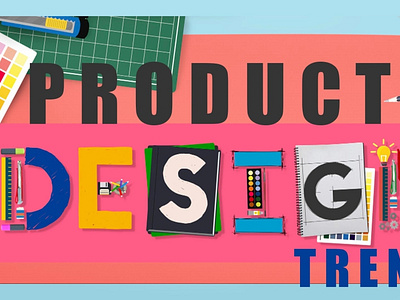13 Inspiring Product Design Trends for 2023
In the field of product design, major trends to watch for in 2023 include “people-centered innovation,” “sustainable design,” “experimental typefaces,” “minimalism,” and “immersive animations.” In order to provide you with inspiration for your next design project, we will discuss all of these and other topics in more detail.
Skeuomorphism was a major trend in design in the previous year. Skeuomorphic design refers to the technique of giving digital user interfaces the appearance of physical objects that exist in the physical world. Toggles, switches, and dials are typical examples of this kind of element that may be found in user interfaces.
Here are 2023’s Product Design Trends | Product Design Trends for 2023 | design trends | trends 2023
In the year 2022, designers made things more personalised by enabling users to alter the experiences’ colour schemes, soundscapes, and layouts. Material Design 3 with Dynamic Color includes this functionality as one of its capabilities.
13 Inspiring Product Design Trends for 2023
It was difficult to narrow down just a handful of this year’s trends in graphic design since there are so many that are fun, intriguing, and original. The following are our thirteen most anticipated trends in product design for the year 2023.
1) Construct according to the codes.
We are thrilled to see an increase in the number of firms using code-based design tools such as trends-design hugger, and we consider ourselves to be ardent proponents of this methodology. Users of the trends-design hugger may be able to look forward to some very interesting improvements in the year 2023, when we eventually release our Merge-MUI integration.
Arman Chowdhury Nijum has created a design system for Halal Lab that is based on an e-commerce mobile app. Follow us on Twitter and hire us now!
MUI is a React UI toolkit that draws its inspiration from Material Design. It is used to generate prototypes in trendsdesignhugger, which are then shown on the website. When designing a product utilising production-ready components, usability testing may be improved, product drift can be minimised, and design handoffs can be made more easily.
2) The Material Design of the Third Iteration
Google’s Material Design user interface framework is now in its third major version, and it has maintained its position as the de facto standard for many different kinds of product design. Rapid iteration and scaling of designers’ products is made possible by a UI kit that is both comprehensive and adaptable.
Material Design 3 introduces three brand-new features, which are as follows:
Dynamic Color, a company that lets consumers design their own colour schemes by selecting their own wallpaper and other features, is a perfect example of the movement toward user agency in the field of consumer products. Dynamic Color gives clients the ability to build their own colour schemes.
Google has developed user interface design patterns specifically for foldable mobile devices, which are on the horizon in the IT industry. These designs address a wide range of topics, including postures, reachability, hinges, and screen dividers.
The use of design tokens enables designers to build up reusable CSS variables for a variety of aspects, including colour, typeface, measurement, and more.
3) The Art of Writing
Typography may have a detrimental impact on usability if it is not done properly, yet it is crucial for generating consistent user interface design and providing customers with innovative experiences. want more
